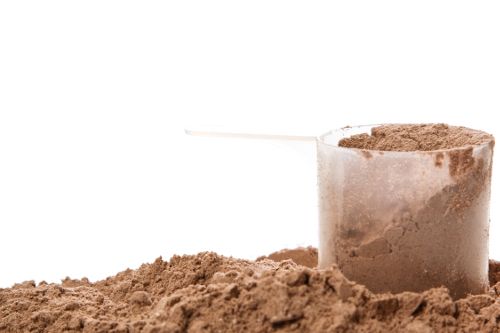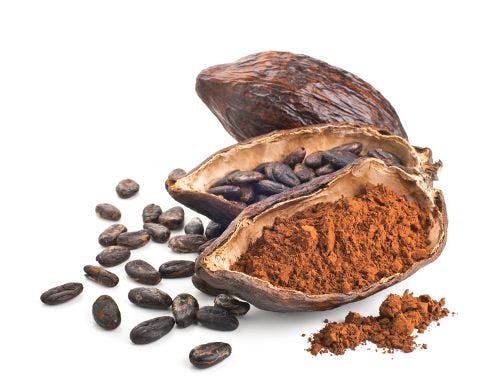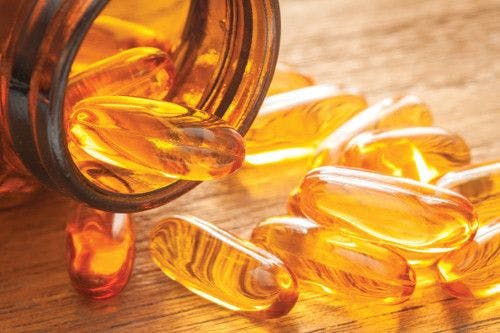Which Flavors Work Best for Dairy Protein versus Plant Protein?
There are slight differences in terms of which of those flavors pair better with dairy (whey) protein versus plant protein.
Photo © Shutterstock.com/BLACKDAY

Consumers everywhere are quickly embracing protein drinks (powders and RTDs) as one of the surest investments in good health-and yet, a trip down the products’ retail aisle might have one thinking that he or she had wandered into the desserts section. Just consider some of the product flavors: Glazed Donut, Cookies ’n Cream, S’mores, Birthday Cake.
Is this a case of consumers wanting what they can’t have? In a way. “Consumers of high-protein beverages tend to be more health-conscious. Their diets tend to be more restrictive,” points out Bob Verdi, PhD, health and wellness business director for flavor supplier Virginia Dare (Brooklyn, NY). A dessert-flavored protein powder or drink can give these customers the illusion of “guilt-free indulgence” and allow them to “cheat” on their diets, without cheating on health, he says.
It’s no surprise that some of the most successful flavors currently in the protein aisle are those sweet and sinful. Taking a deeper dive, there are slight differences in terms of which of those flavors pair better with dairy (whey) protein versus plant protein.
Whey versus Plant
Plant-protein powders and RTDs are much newer to the market than whey-protein powders and RTDs. While whey proteins have had time to branch out beyond flavor basics like chocolate and vanilla, plant proteins are still staying true to these classic flavors, says Megan Trent, marketing representative for flavor firm Gold Coast Ingredients (Commerce, CA).
“The whey-protein industry strives for what is new, creative, and will stand out in the market,” she says. Whey-protein customers are especially interested in sophisticated sweets like Salted Caramel, Red Velvet, Peaches ’n Cream, Sugar Cookie, Cinnamon Bun, Orange Creamsicle, Chocolate Ãclair, Bear Claw, and Baklava-all flavors mentioned by flavor firms.
By contrast, says Trent, “Currently, plant-based protein is a trend itself. Consumers seeking plant-based protein beverages tend to first examine the ingredients (vegan, raw, allergen-free) and secondly select their flavor preferences based on availability.” For plant-protein beverages, popular flavors are still traditional vanilla, chocolate, banana, and strawberry, she says. Trent and others also mention chai, coffee, and mocha as emerging flavors for plant proteins.
While flavor houses all say that they can achieve pleasing-tasting whey- or plant-protein products, plant proteins are still said to be slightly more difficult to flavor, for several reasons. For one, plant proteins like pea, chickpea, soy, hemp, rice, and spirulina are known to have earthier, bitter notes, says Trent. Other plant-protein challenges can include palatability, says Jim Yang, director of R&D beverage systems and flavors for supplier Kerry (Beloit, WI), or even a grainy or “chunky” mouthfeel, says Virginia Dare’s Verdi. And, says Trent, other ingredients in a powder or RTD-amino acids, caffeine, stevia-can also contribute unwanted tastes.
Companies have ways of sidestepping these challenges. First, of course, is to find the right flavor to complement the protein. “For dairy protein, traditional sweet brown flavors work better, while heavier flavors such as chocolate, mocha, and coffee help cover off-notes in plant proteins better,” says Yang. Will McCormack, PhD, business development manager, nutrition, for Synergy Flavors (Wauconda, IL), says that sweet brown flavors also work for plant proteins, “whereas fruitier flavors can prove more difficult to pair.” McCormack also points out that flavors within dairy proteins can also differ-for instance, between grass-fed and stall-fed dairy protein. Milky, creamy notes like strawberry milkshake or vanilla ice cream work better for grass-fed, he says, while a “burnt” flavor like coffee would work better for a stall-fed dairy protein.
In addition to finding the right flavor pairing, companies often use masking or sweetness enhancers to fine-tune flavor. And finding the right blends of plant proteins to begin with is crucial. Kerry, for instance, recently launched ProDiem, a flavor-optimized plant-protein product that finds the best balance of different protein types, including pea, rice, and oat protein.
Looking Forward
Plant-protein profiles will only continue to improve, says McCormack. “Pea protein five years ago tasted much worse than it does now, but those learnings will continue and will then need to extend to rice, hemp, and algae, etc.”
Looking forward, no matter which side of the aisle you stand on-plant or dairy-indulgence is still the name of the game. Thanks to the options on the market today, protein customers can have their cake (good health) and eat it (indulgent flavors), too.
Also read:
2017 Flavor Trends for Food and Beverage
Dessert Flavors Rule in Sports Nutrition, Say IFT Exhibitors
Which Flavors Are Trending in Energy Drinks?

Prinova acquires Aplinova to further increase its footprint in Latin America
April 7th 2025Prinova has recently announced the acquisition of Brazilian ingredients distributor Aplinova, which is a provider of specialty ingredients for a range of market segments that include food, beverage, supplements, and personal care.






















